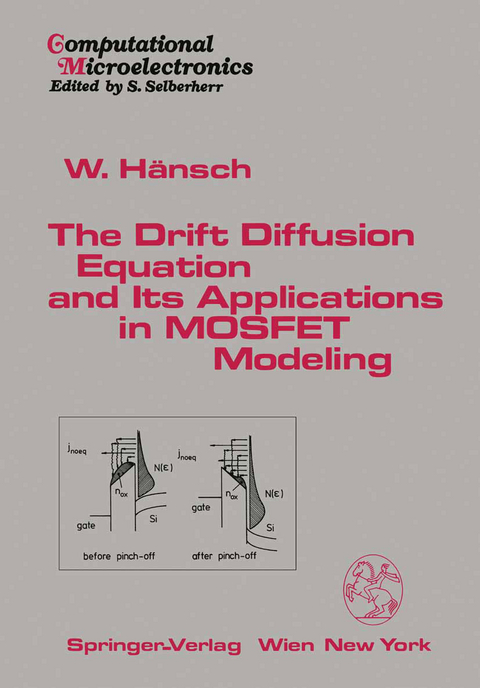
The Drift Diffusion Equation and Its Applications in MOSFET Modeling
Springer Wien (Verlag)
978-3-7091-9097-5 (ISBN)
1 Boltzmann's Equation.- 1.1 Introduction.- 1.2 Many-Body System in Equilibrium.- 1.3 Non-Equilibrium Green's Functions.- References.- 2 Hydrodynamic Model.- 2.1 Introduction.- 2.2 Linear Response and Relaxation-Time Approximation.- 2.3 Nonlinear Response and the Moment Method.- 2.4 Summary.- References.- 3 Carrier Transport in an Inversion Channel.- 3.1 Introduction.- 3.2 The Classical Limit ? ? 0.- 3.3 Surface Mobility.- References.- 4 High Energetic Carriers.- 4.1 Introduction.- 4.2 Impact Ionization Scattering Strength.- 4.3 Distribution Function.- 4.4 Impact Ionization Coefficient and Gate Oxide Injection.- References.- 5 Degredation.- 5.1 Introduction.- 5.2 Analyzing a Degraded MOSFET.- 5.3 The Degradation Process.- References.- Appendix 1. Perturbation Theory and Diagram Technique.- Appendix 2. Inversion Channel Particle-Density Distribution in Equilibrium.- Author Index.
| Erscheint lt. Verlag | 30.12.2011 |
|---|---|
| Reihe/Serie | Computational Microelectronics |
| Zusatzinfo | XII, 271 p. |
| Verlagsort | Vienna |
| Sprache | englisch |
| Maße | 170 x 244 mm |
| Gewicht | 501 g |
| Themenwelt | Technik ► Elektrotechnik / Energietechnik |
| Technik ► Maschinenbau | |
| Schlagworte | Bridge • Energy • Halbleiterbauelement • Ladungstransport • Mechanics • metal oxide semiconductur field-effect transistor • metal oxide semiconductur field-effect transistor (MOSFET) • Model • Modeling • quantum mechanics • scattering • semiconductor • semiconductor device • Stress • Surface • Transport |
| ISBN-10 | 3-7091-9097-5 / 3709190975 |
| ISBN-13 | 978-3-7091-9097-5 / 9783709190975 |
| Zustand | Neuware |
| Haben Sie eine Frage zum Produkt? |
aus dem Bereich


